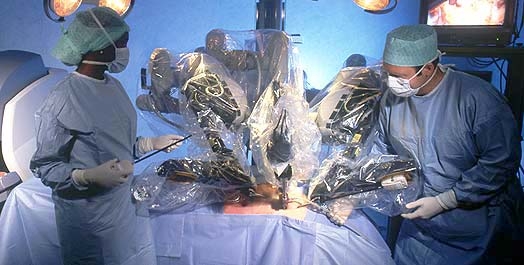Robots in Hospitals

Robots in Hospitals?
Science Fiction is Quickly Becoming Science Fact!
Robots in Hospitals? Have you ever thought of yourself lying in a hospital bed being treated by a robot instead of a human doctor or nurse? With the advent of modern robotic technology, science has invented medical robots that exist today which help with surgery in hospitals across the world. These robot hospital helpers are proving to be useful, functional, and in many ways the next step in modern medicine. Robots in hospitals and doctors’ offices are now aiding patients in ways that were only a few years ago considered science fiction.
Robots such as the PUMA and the PROBOT were the first robots to aid doctors in the hospitals. PUMA, known for its great mobility and a wide range of actions as a general purpose industrial robot was first used in 1985 to aid in a brain biopsy. The PROBOT, also a surgical robot has the ability to remove soft tissue from a human body during an open surgery.
After that came the ROBODOC, AESOP and the ZEUS. ROBODOC was first used to aid in hip surgeries, and after was used to help with bone surgeries in general. AESOP, the first surgical robot approved by the United States FDA, is like the ROBODOC, but it has more advanced features that provide the doctors as well as the patients more options when it comes to surgery including heart valve surgery. The ZEUS robot, on the other hand, boasts of its ability to perform deep surgeries in very sensitive parts of the body like the fallopian tube, lungs, and brain.
The latest offering in modern robotic medicine is the daVinci Surgical System robot. It is the leading edge in the growing line of hospital robots that are used for surgery. What sets this robot apart is its ability to perform minimally invasive yet complex surgical procedures.
There are pharmacy robots and blood drawing robots. There are medicine delivery robots. There are robots that doctors guide remotely to "visit" far away patients. The field of medical robotics is growing by leaps and bounds.
Se our other medical robotics articles on this site. We have articles about the other side of medical robotics, the side where people have been mamed or killed by robot-assisted surgery. It's always best to hear both sides of a story and we tell you the good AND the bad.
Learn more about da Vinci Robot Surgery